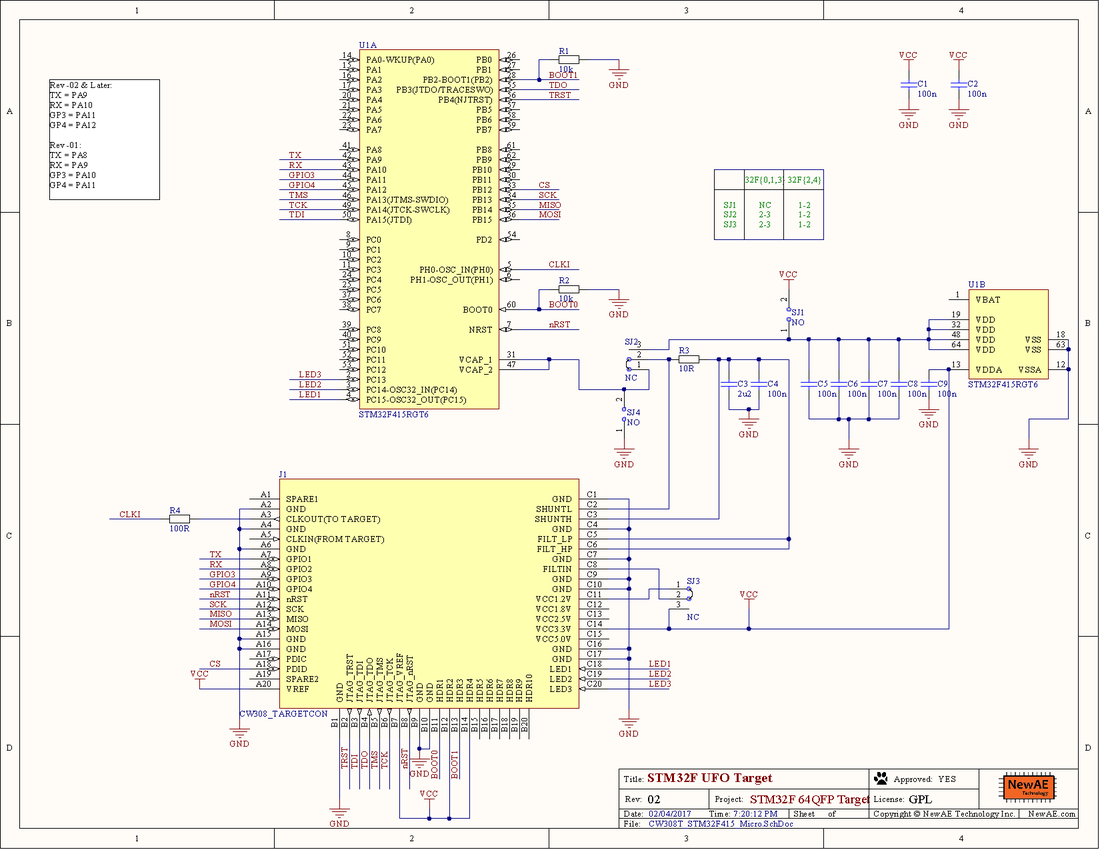CW308T-STM32F
| CW308T-STM32F | |
|---|---|
| Target Device | ST STM32F |
| Target Architecture | Cortex M0,M3,M4 |
| Hardware Crypto | Possible |
| Design Files | OSH Park PCBs |
| Supported Apps | Simple Serial Enc/Auth |
| Programmer | ST-LINK/V2 |
| Status | Released |
Supported Devices
The STM32F board supports several STM32F devices in the TQFP-64 package. Various solder jumpers need to bet set to either the "A" or "B" position to select appropriate VCC supply for the different series. The following table summarizes examples of suitable devices:
| STM32F Series | Package | Device | Hardware AES | Tested | Jumper |
|---|---|---|---|---|---|
| F0 | TQFP-64 | B | |||
| F1 | TQFP-64 | B | |||
| F2 | TQFP-64 | A | |||
| F3 | TQFP-64 | B | |||
| F4 | TQFP-64 | STM32F415RGT6 | Yes | Yes | A |
VCC-Int Supply
Several devices (F2, F4) have internal core voltage regulators. By default the CW308 board attempts to provide power for these pins, but the voltage may not be high enough to cause the internal regulator to disable itself. In this case you can use the VADJ regulator to ensure the internal regulator is disabled. See Targets with Internal Regulators for details.
Hardware AES
The STM32F21x, and STM32F41x/43x have hardware crypto modules (AES, DES, TDES) along with hardware hash (SHA1, MD5).
Programming Connection
The 20-pin JTAG port (J6 on CW308 Board) can be used with the ST-LINK/V2 which is a low-cost JTAG programmer.
It is also possible to use other JTAG programmers such as OpenOCD. The following command worked with an Olimex OpenOCD programmer and their OpenOCD for Windows software:
openocd -f path/to/board/files/cw308.cfg -c init -c targets -c "halt" -c "flash write_image erase path/to/firmware.hex" -c "verify_image path/to/firmware.hex" -c "reset run" -c shutdown
where the contents of cw308.cfg are
source [find interface/olimex-arm-usb-ocd-h.cfg] source [find target/stm32f4x.cfg] reset_config srst_only
